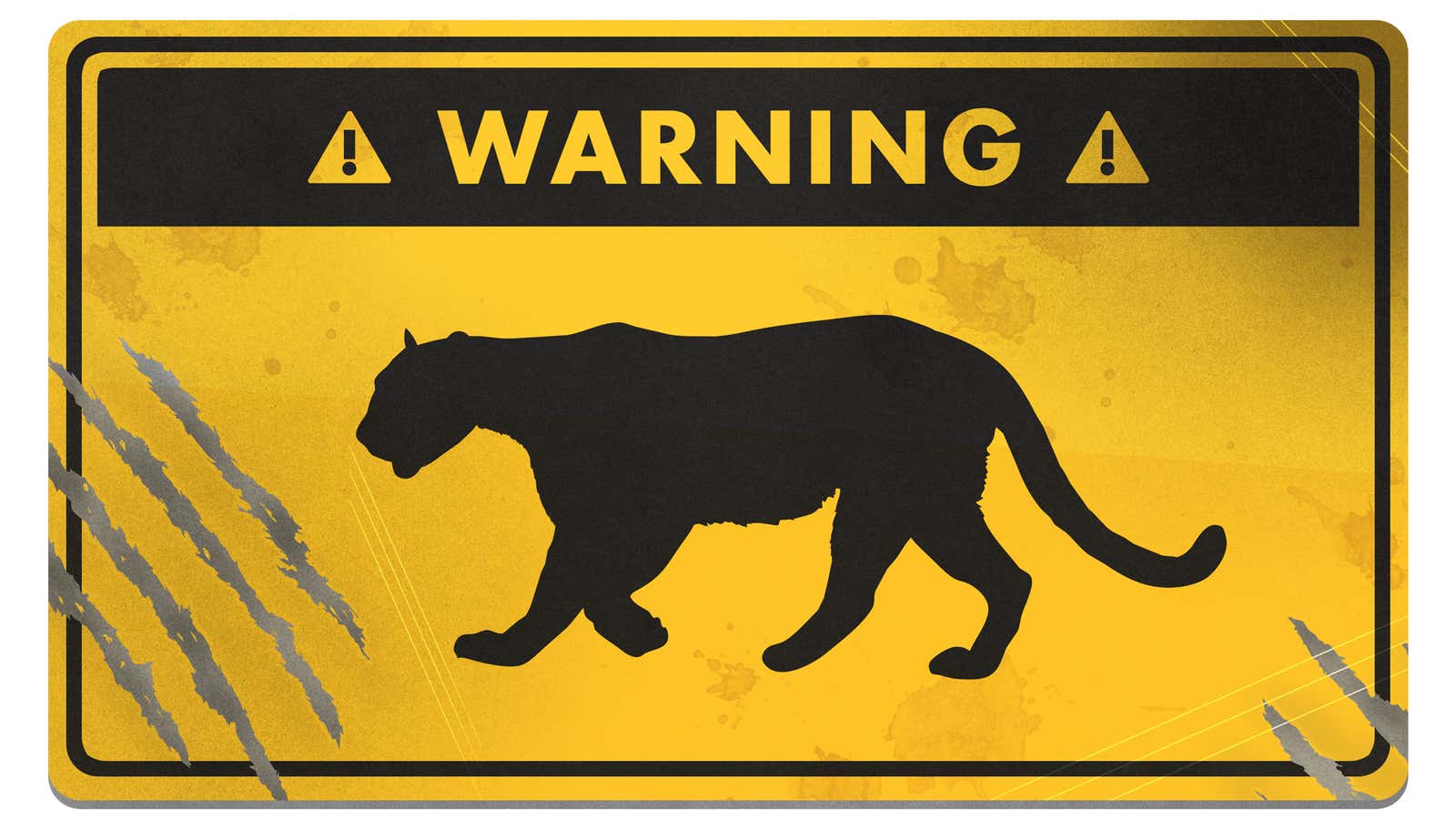How to Survive When Attacked by a Mountain Lion

Mountain lions – also known as cougars, pumas, catamunts, or Florida panthers – have razor-sharp claws, can weigh over 200 pounds, and can run at speeds of up to 50 miles per hour. These are not ordinary kittens living in the neighborhood. Here’s what you should do if you encounter it in the wild.
Mountain lions, also known as cougars, pumas, catamunts or Florida panthers, love to hunt when deer and other prey are most active at dawn and dusk, according to the Mountain Lion Foundation . Of course, it is during this time that many tourists love to ride the trails and avoid the midday sun. This makes encountering mountain lions a very real opportunity in many parts of the United States.
Fortunately, mountain lion attacks are rare, averaging about six per year in North America. And deaths are even rarer – an average of about one person a year. California has recorded the most attacks in the United States, and there have only been 14 attacks in the state since 1986 , according to the California Department of Fish and Wildlife. As such, you’re probably more likely to die from recreational activities you do than from being eaten by a big cat. However, encounters are not uncommon and there is a right and wrong way to deal with them.
The best defense against mountain lions is a reliable, proactive attack. Be vigilant while in the mountain lion country, especially when you squat, sit, or kneel. They see this as an opportunity for attack. National Park Service biologists suggest that mountain lions don’t generally recognize standing humans as prey, so it’s worth standing up straight, especially if you know one is nearby. In the video above from the Big Cat Rescue YouTube channel, you can see this hunting instinct in action. As soon as the handler turns his back and gets low, all the big cats, including their cougar Sassifrass , begin to chase and prepare to attack. It is also advisable to keep a close eye on young children as they are very low to the ground. In truth, you are the last person they want to hunt, but they can easily confuse you or your child in something else if their instincts kick in.
If you come across a dead animal in the bushes, do not investigate and leave the area. This could be a food stash that the mountain lion wants to protect. If you do run into a mountain lion, National Park Service suggests that you stay calm and either stand still or slowly retreat. Do not turn your back on him or run, as this can stimulate the cat’s instinct to chase. Give the animal a chance to escape because it is probably just as afraid of you as you are.
If he starts to approach you, make yourself bigger by raising your arms and unbuttoning your jacket, if you are wearing one. And wave your hands, speaking in a loud, firm voice. Sometimes this is enough to scare them away, but if not, throw rocks, twigs, or anything else you can find in his direction, not directly at him (no need to hurt him or anger him for no reason). Basically, do your best to show that you are not a prey and can be dangerous to her. If he attacks, throw things right at him and use whatever you can to fight back.
Don’t stop resisting! Many hikers have successfully fought off mountain lions with stones, sticks, hats, jackets, garden tools, and even bare hands. Recently, a mother saved her son from an attack by simply grabbing the animal and throwing it off. If they sense that you might harm them or that you are not worth the effort, they will most likely turn off and run to safety.